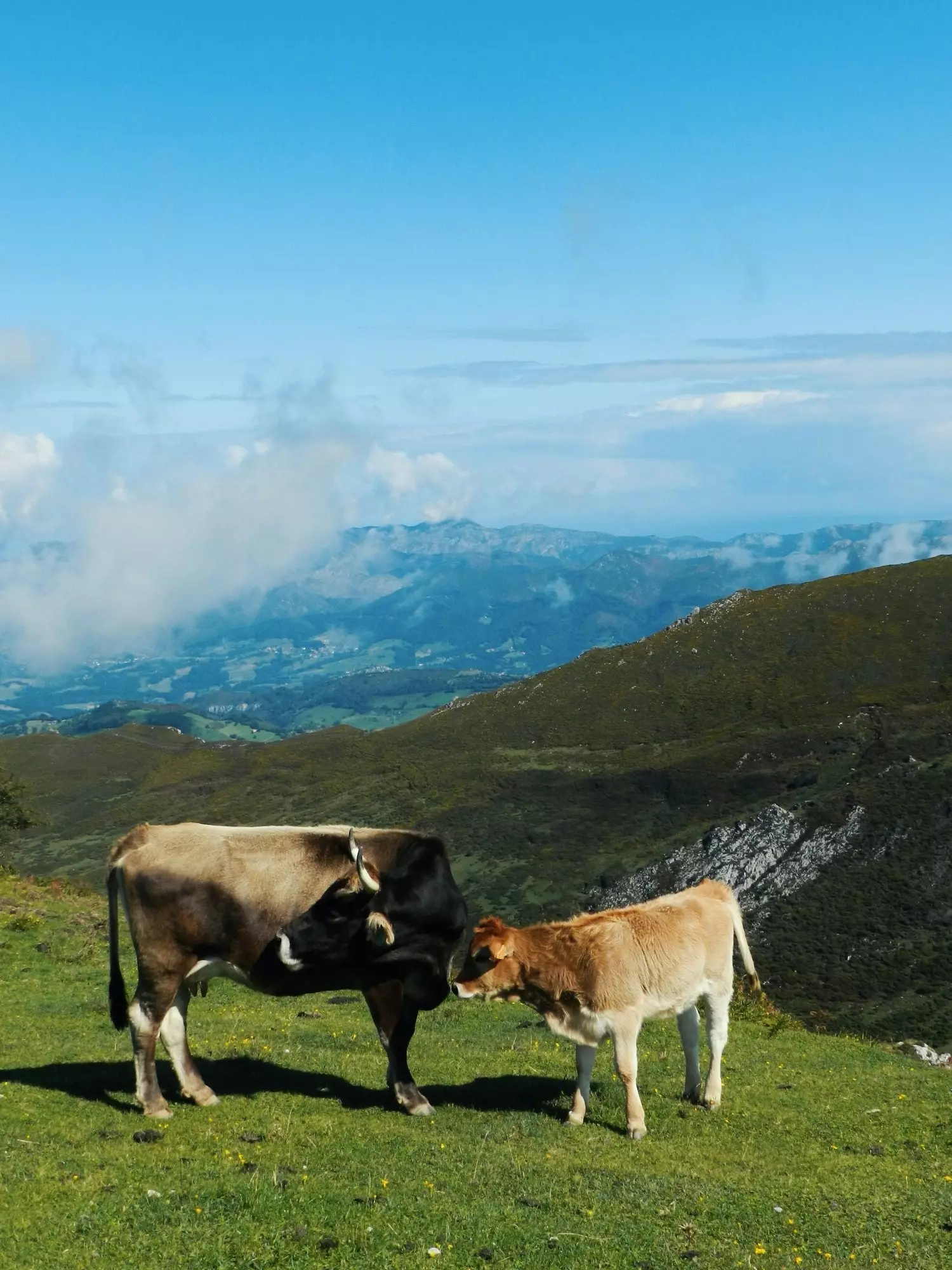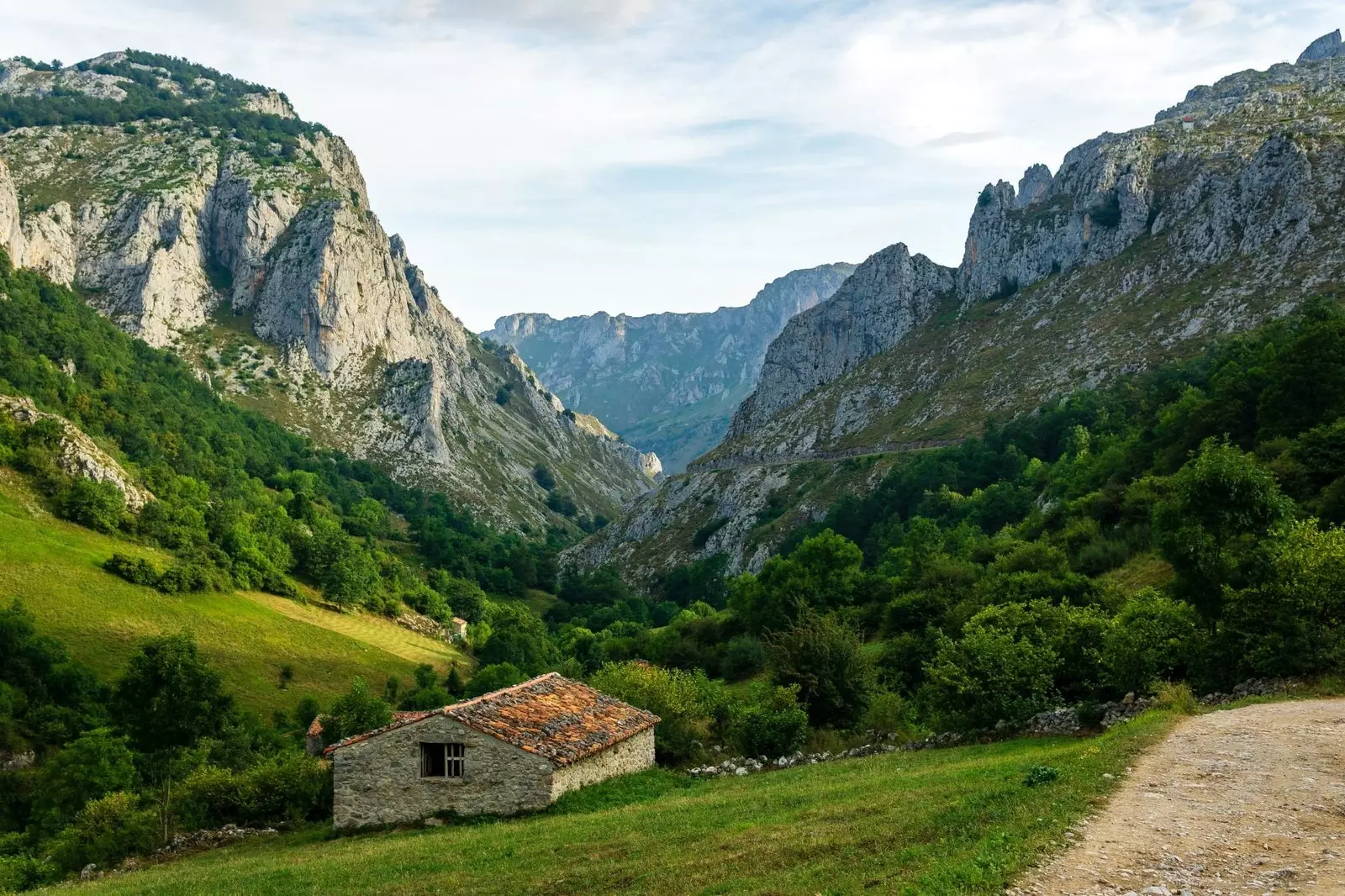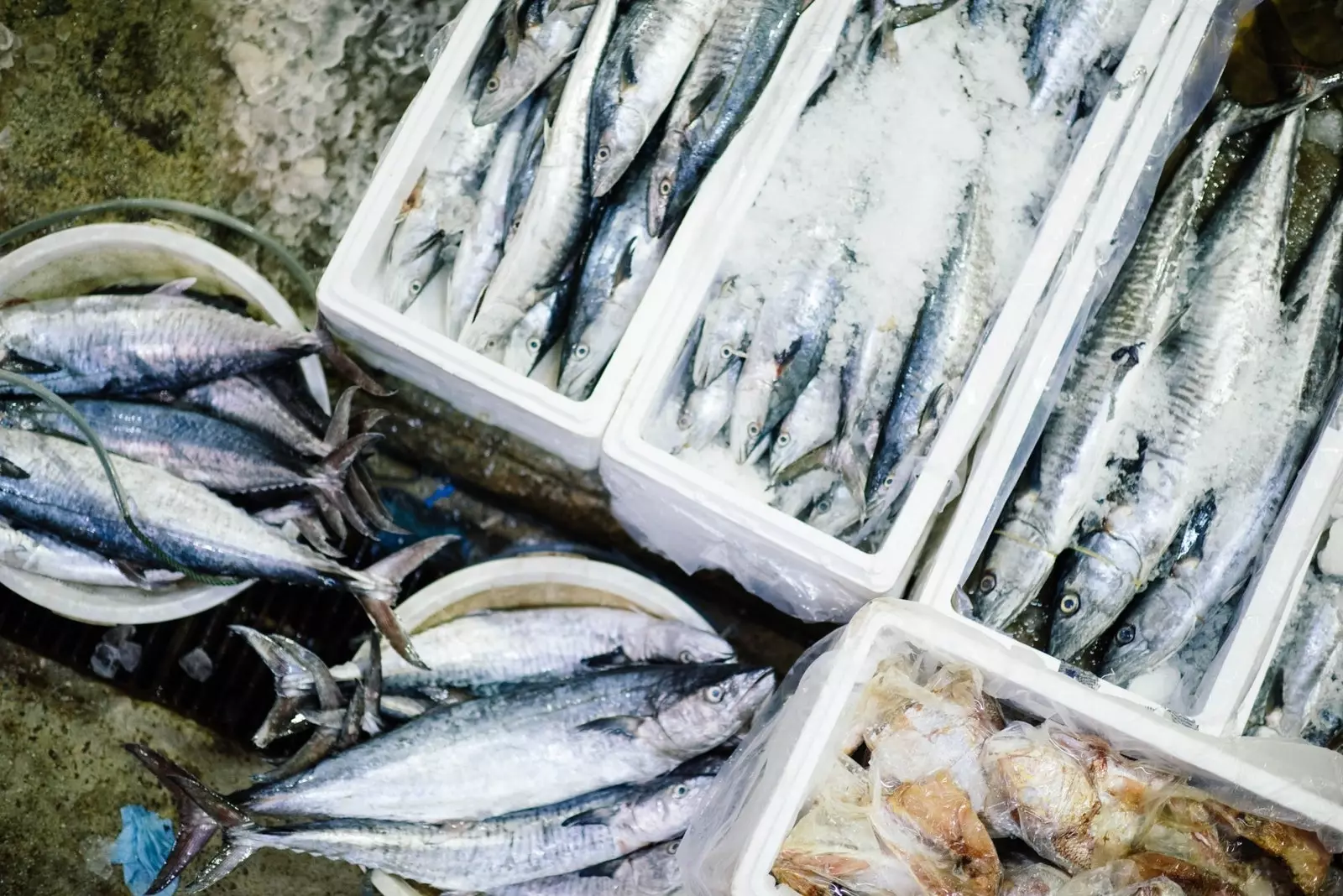
Asturias, landscape cuisine
Far from being conquered by passing fads that placed kitchens closer to laboratories than to vegetable gardens, in Asturias the local product has always been in the center of your kitchen.
And it is that, throughout its territory, both in the East and in the West, both on the coast and inland, you're never far from a well-kept garden with care, of some beans that grow pointing to the sky, cabbages that greet the sun.

Who has not had to wait on some Asturian road for the cows to let themselves pass?
What in the Anglo-Saxon world is called “farm to table” (from the garden to the table), in Asturias it is simply known as tradition.
in their little more than ten thousand square kilometers , Asturias hides a singular territory with a great diversity that goes beyond the incredible variety of landscapes. Also, who has not had to wait patiently inside the car on some Asturian highway that the cows were allowed to overtake?
Precisely, it is the work of artisans like those ranchers that give one of the most recognizable pictures of the Principality, the one that native cooks they put in value from their restaurants.
show all nuances of a landscape -the smells, the colors, the flavors, the textures- through culinary art is not an easy task.
the steep asturian orography is perhaps one of the reasons why many traditions have been preserved over the centuries and thanks to which we can enjoy the immense wealth of products of the region today.
Some enlightened travelers like Joseph Townsend they already talked about the magic of Asturias in the eighteenth century, when approaching Pola de Somiedo the British wrote: "If Shakespeare had passed this way , his imagination would never have paid attention to the cliffs of Dover.
The Asturian is a society that lives by and to eat and there good food is religion, something that does not go unnoticed by visitors.

The ritual of pouring cider
No one in their right mind would leave Asturias without enjoying a well-poured culín of cider , the drink reigns in most of all the Asturian territory and that has its faithful reflection in the pomaradas that in spring paint the landscape white.
However, there are many who visit the region without trying the classic drink of western Asturias, wine. The impossible slopes from which they hang centennial vines treasure the garden that feeds grapes to the producers of the Denomination of Origin Cangas , a quality brand that testifies to the moment of splendor that it is experiencing Asturian heroic viticulture , a project that every year New warehouses are added.
Again it is the landscape, with its pastures of a green that dazzles, and those caves with the ideal conditions to mature some of the best cheeses in the world, the differentiating element in the Asturian cheese universe.
With more than 50 artisan cheeses , the region is known as the largest cheese stain in Europe and has four Protected Designations of Origin and one Protected Geographical Indication.
The East -with Picos de Europa and the Cuera and Sueve mountain ranges- It is the area that treasures the most cheeses, including Cabrales, the Gamonéu and the Beyos.

Picos de Europa
The landscape of the council Case, in the central area , is locked in Casin cheese , one of the oldest, while the Afuega'l Pitu, one of the most deeply rooted , keeps centuries of cheese tradition from Asturian homes inside and most of the producers are in the surroundings of the Nalón and Narcea rivers, as well as in the Sierra del Aramo.
One of the best ways to discover the region is walking. Not only can you enjoy roads inaccessible by road and the best views from the heights, but also, depending on the season, the encounter with a herd of cows, goats or sheep.
the fabulous asturian veal -the dominant races are Asturian from the valleys and from the mountains or casina- has deserved fame at a national level, and moreover, they are often the protagonists of one of the the most popular postcards of Asturias , that of the animals grazing happily.
Likewise, pork has historically played a key role in life in Asturian villages and the capacity for innovation of these ancestors is surprising: from the chosco de Tineo to the picadillo, the fly or the emberzao, there are countless recipes with which to enjoy the peasant roots of the region.
The Cantabrian Sea, with its constant roar, is an infinite pantry from which fishermen , with great effort, extract some of the best seafood and fish of the world.

In Asturias you can eat the Cantabrian
It is worth stopping to decipher the names in Asturian: when you see pixin on the menu, it means monkfish , and if you ask for some andaricas, some crabs will come to you , while limpets are llampares. In any case, in Asturian or Spanish, in Asturias you can eat the Bay of Biscay.
The desserts also contain nods to the landscape. the walnut trees , so common in Asturian green spaces, of which there are many, allow this landscape to be transferred to the table with one of the he most delicious sweets in Asturias: the casadielles , which resemble a long shaped dumpling , stuffed with nuts, sugar and anise.
Another dessert to eat the landscape in Asturias is rice pudding, a household classic that Asturian chefs have made their own and a finishing touch for any meal in the region.
